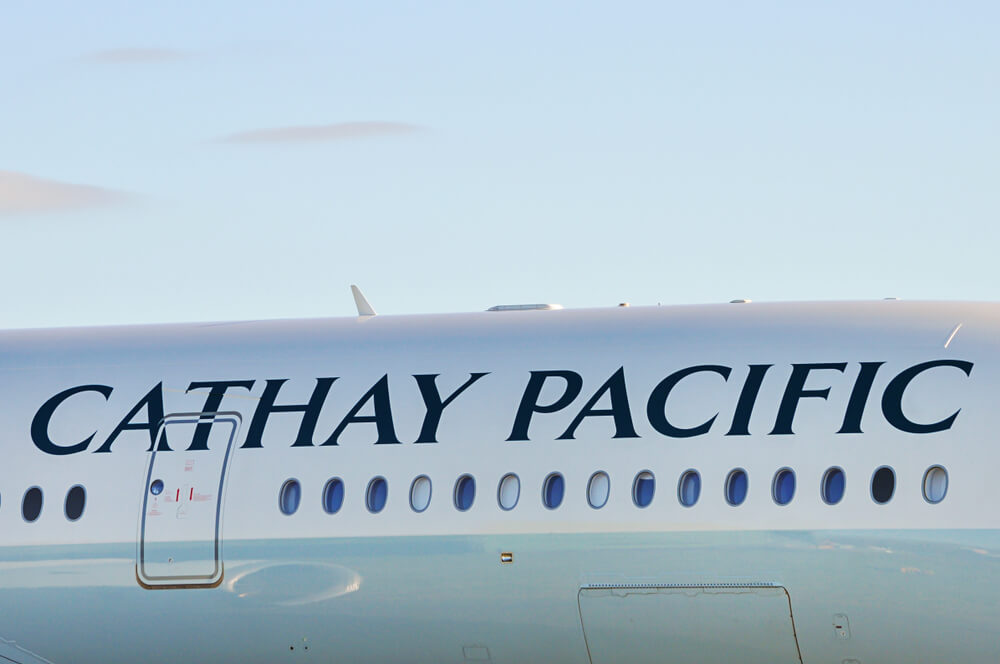As the protests in Hong Kong escalate further, Cathay Pacific finds out that its previous forecasts of falling passenger traffic did not quite come true. The flag carrier of Hong Kong has previously indicated that the “protests in Hong Kong reduced inbound passenger traffic in July”, but the total number of passengers traveling with the airline has actually increased, the carrier’s latest traffic figures show.
In total, Cathay Pacific transferred over 3.2 million passengers in July, which is 4% more than in July 2018. But the airline’s results also showcased the first negative effects of the Hong Kong protests – total Revenue Passenger Kilometers (RPK) on mainland China routes shrank by 2.8% compared to July 2018, while Year-to-date (YTD) results were 1.1% lower. The routes between China and Hong Kong are vital to Cathay Pacific operations – in H1 2019, 48% of the total revenue came from Hong Kong and Mainland China sales.
But the declining RPKs on mainland China routes were offset by other continents within the airlines’ network – with North American and European flights showcasing the biggest growth, 8.1% and 8.9% increase in RPK respectively. However, the new Cathay Pacific Chief Customer and Commercial Officer, Ronald Lam remained skeptical, as he highlighted that “North America, Europe and mainland China routes underperformed” even if they showcased growth. The total RPK increased by 6.4%, while YTD results were higher by 6.6%.
Cathay cargo operations follow the global trends of a downturn in freight demand – compared to July 2018, the company carried 8.2% less cargo, while YTD results are lower by 6.1% compared to the same period in 2018, even if the cargo capacity, Available Freight Ton Kilometers (AFTK), increased 3.8%. Capacity in passenger operations has grown as well – Available Seat Kilometers (ASK) up by 7.2% in July, YTD increased by 6.7%.
While Cathay Pacific expected July’s traffic to dwindle due to the protests in Hong Kong, it seems like the situation stabilized during the month. But in August, as Hong Kong protests continue, the company sees increased pressure from the outside – a major reshuffle in the senior management of Cathay Pacific left the airline with a new CEO, CCO and a fresh CEO at Hong Kong Express. Furthermore, Hong Kong International Airport (HKG) had to cancel flights due to an organized sit-in by the protestors on August 12 and August 13, 2019.
Further uncertainty
Going forward, the airline faces a lot of uncertainty for the remainder of 2019. Lam has specified that Cathay Pacific continues “to be vigilant as we work to mitigate the impact on our business”, but also noted that the carrier anticipates “a much more significant impact to our revenue in August and onwards”. According to the airline, traffic into Hong Kong “has weakened substantially and we’ve also now seen ex-Hong Kong traffic starting to soften, especially on our short-haul network including mainland China, Taiwan, South Korea and South East Asia”.
However, a small glimmer of sunshine for Cathay Pacific was presented by Phil Twyford, New Zealand‘s Minister of Transport. Air New Zealand announced that Twyford approved the plan to extend the strategic partnership between Air New Zealand and Cathay Pacific to October 31, 2024. The two-carrier alliance dates back to 2013 and on peak-travel months, the two airlines operate a total of 25 flights per week between Hong Kong and New Zealand. During a period of instability, the agreement will provide some harmony in Cathay Pacific’s future plans as it aims to complete the three-year transformation plan to restore long-term profitability.
